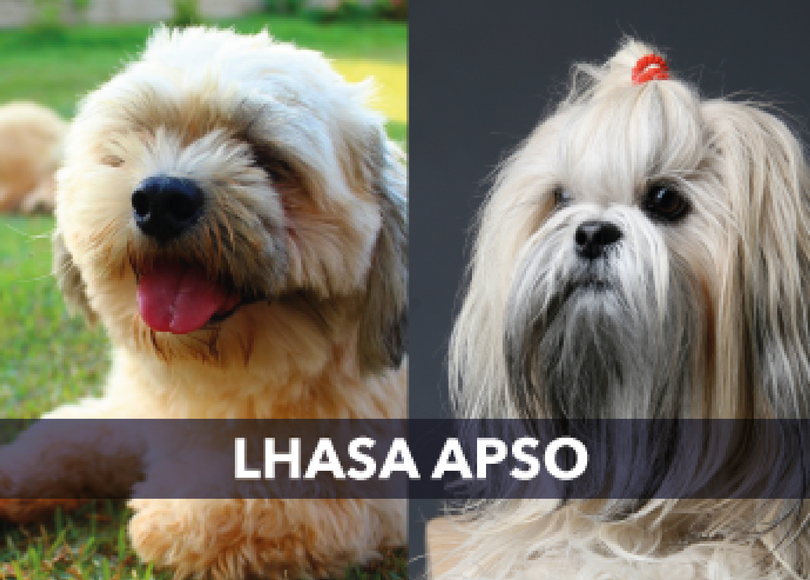This month we’re looking at the confident and headstrong little Lhasa Apso. Originating from Tibet, they were known in their homeland as Abso Seng Kye, which translates as “Bark Lion Sentinel Dog”. This breed was primarily used as a watchdog to protect palaces and monasteries from potential intruders. Ancient folklore tells us that when the dog’s owner passed away, their human soul entered the body of their Lhasa Apso, therefore this breed was considered to be sacred and held in very high regard.
It isn’t uncommon for people to look at this cute little dog and think they would make the perfect lapdog. Although they are indeed small and cuddly, this breed has quite a self-reliant and independent character and will happily take the top dog of the house status if given half the chance. It’s important to establish leadership very early on. The Lhasa Apso likes to do his own thing and compared to a doting breed like a Labrador Retriever, will very much put his own needs before yours. There’s no question that this dog is more than capable of learning the rules, but he just might not be the most attentive or obedient pooch in puppy class.
This breed does not particularly require a great deal of exercise, and so can be suited to a smaller living space. They can be quite content with regular short walks, playing with their toys and having a cuddle on your lap. Although they do often tend to follow their owners around in the house to see what’s going on, they still retain quite an independent nature where needs be, so are unlikely to suffer with any anxiety issues if left alone at home.

Lhasas have a long, thick coat and as an owner, you need to be prepared for the time and maintenance required when it comes to grooming. Daily brushing and combing of the coat is essential, and they should be bathed regularly – as often as once or twice a month.
As with all brachycephalic or short-faced breeds, there can be some health issues relating to their prominent eyes and breathing in particular. Because dogs cool themselves by panting you need to take care they don’t overheat in the hot summer months.
Due to their guarding history, it’s in the Lhasa Apso’s nature to be instinctively protective over his family and they can tend to be quite wary and suspicious of strangers and new people. Socialisation with other dogs from an early age is imperative, to avoid any potential behavioural problems. Although they are by no means a large breed, in their own heads and hearts they see themselves as the biggest and toughest dogs in the park. It is said that “when a Lhasa Apso looks in the mirror, he sees a lion.”
They may be feisty, cheeky, and a little big headed, but there is no question that this dog has a heart of gold. For the right person, the Lhasa Apso will make a great companion.


My Lhasa is brilliant, very laid back, loves his walks, doesnt do toys, rain or mud!! Can be quite ‘deaf’ at times but all in all he is fantastic. Easy to please, loves cuddles and company. I keep his fur about 2-3 inches long much easier to keep and maintain, he adores a good groom, and walks into the shower when he needs one. Cheeky, verbal and funny an attribute to any family, but can be weary of little ones, would rather walk away from them. Not a barker but will grumble if someone comes through the gate. Food orientated so watch for weight gain, its on before you realise it. Roo, that is name of the Dude, is eating and enjoying tailor made Tails dog food.
I agree with all your comments my Lhasa, bengy, likes long walks sometimes, thinks every dog is friendly! even, when they are not! but he is very prone to putting on weight! I do mix some of my shop bought wet food with, his tails dry food. and will try some tails wet food!
Fantastic article…Thanks for sharing such an amazing content with us.You are really an amazing writer.good job.Keep it up.
I have this dog breed amazing creature
nice content
nice one
amazing content